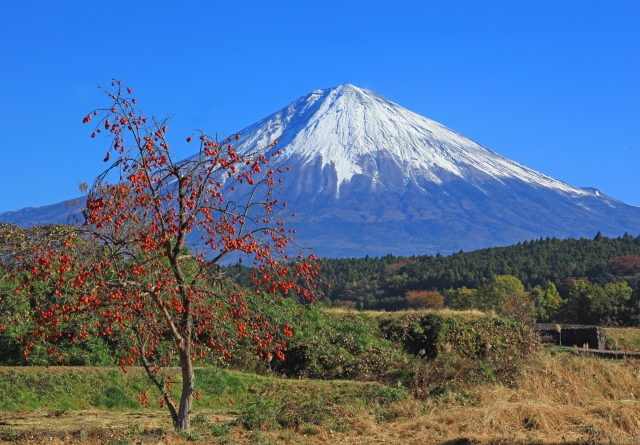Japan’s dramatic landscape has been shaped by volcanic activity for millions of years, creating some of the most breathtaking natural wonders in Asia. From the iconic Mount Fuji to the continuously active Sakurajima, these attract millions of visitors annually.
In this article, we’ll explore Japan’s fascinating volcanoes and help you plan volcanic tour.
Mount Fuji:Japan’s Iconic Symbol
Standing at 3,776 meters, Mount Fuji is Japan’s highest peak and most recognizable natural landmark.
This symmetrical stratovolcano attracts over 300,000 climbers during its climbing season (early July to early September).
Visitors can enjoy various activities year-round, from photography at the Chureito Pagoda to hiking the lower trails, making it an essential stop on any volcanic tour of Japan.
Sakurajima:The Most Active Volcano
Located in Kagoshima Prefecture, Sakurajima is one of Japan’s most active volcanoes, with regular small eruptions occurring almost daily.
Once an island, it is now connected to the mainland by a lava flow.
Visitors can observe this magnificent volcano from various viewpoints around Kagoshima City or visit the Sakurajima Visitor Center to learn about its history and monitoring systems.
Mount Aso:World’s Largest Caldera
Mount Aso in Kumamoto Prefecture boasts the large volcanic caldera, spanning approximately 25 km north to south and 18 km east to west.
The active crater of Mount Nakadake offers visitors a rare chance to peek into the Earth’s interior, though access depends on volcanic activity levels.
Volcano-related fun
1:Hiking Volcanic Trails
Japan offers numerous hiking opportunities for all skill levels around its volcanoes. Popular trails include…
- The Mount Fuji climbing routes (varying difficulties)
- The Asama Mountain Trail in Nagano
- The family-friendly paths around Mount Usu in Hokkaido
2:Hot Springs
The volcanic activity beneath Japan’s surface creates thousands of natural hot springs. Notable volcanic onsen areas include…
- Beppu’s “Hells” in Oita Prefecture
- Unzen Onsen in Nagasaki Prefecture
- Noboribetsu’s various thermal features in Hokkaido
Planning Your Volcanic tour
Best Seasons
Each season in Japan offers unique volcanic viewing experiences.
The official climbing season for Mount Fuji runs from early July through early September, with mountain facilities operational during this period.
| Season | Advantages | Considerations |
|---|---|---|
| Spring (Mar-May) | Clear visibility, comfortable temperatures | Some trails may still have snow |
| Summer (Jun-Aug) | Best hiking conditions, all facilities open | Crowded trails, humid weather |
| Fall (Sep-Nov) | Beautiful autumn colors, pleasant weather | Early sunset, varying trail conditions |
| Winter (Dec-Feb) | Snow-capped views, hot spring enjoyment | Limited access to some areas |
Safety Guidelines
Visitor safety is paramount when exploring volcanic areas.
The Japan Meteorological Agency maintains up-to-date information on volcanic activity levels, which visitors should check before their trip. When planning your visit, register your climbing plans with local authorities.
Essential safety equipment includes appropriate footwear, protective headgear for active volcanic areas, and masks for locations with volcanic gases.
Always follow posted warning signs, stay on designated paths, and carry sufficient water. Tour guides familiar with local conditions can provide valuable insights and additional safety measures for more challenging locations.
Transportation
Major volcanic areas are typically served by local bus networks that connect railway stations to visitor centers and trailheads.
In Hokkaido and parts of Kyushu, where public transportation may be limited, renting a car provides greater flexibility. Many car rental companies offer English GPS systems and basic insurance coverage for international visitors.
Unique Volcanic Destinations
The volcanic islands of Japan offer extraordinary experiences that showcase the country’s geological diversity.
- Aogashima, double volcanic island south of Tokyo, hosts a small village within its crater, providing a unique glimpse of life amid volcanic terrain.
- The Izu Islands chain, easily accessible from Tokyo, features multiple volcanic formations and excellent hiking opportunities.
- Satsuma-Iwojima stands out for its continuous volcanic gas emissions and distinctive ecosystem that has adapted to these conditions.
Beyond famous volcanic sites lie several lesser-known destinations worthy of exploration.
- The Mount Kirishima complex in Kyushu presents visitors with multiple volcanic peaks and well-maintained hiking trails through diverse landscapes.
- Mount Zao, straddling Yamagata and Miyagi prefectures, is renowned for its emerald crater lake and winter’s “snow monsters” – trees encased in wind-blown snow and ice.
- In Hokkaido, Mount Asahi reigns as the island’s highest peak, offering visitors panoramic views of the surrounding volcanic terrain.
For photography enthusiasts, Japan’s volcanic landscapes provide opportunities for capturing stunning images.
- Lake Kawaguchiko offers classic views of Mount Fuji reflected in its waters, particularly beautiful during early morning hours.
- The Shiroyama Observatory in Kagoshima provides sweeping views of Sakurajima volcano against the city backdrop, especially dramatic during sunset.
- At Mount Aso, the Daikan-bo lookout point presents photographers with unobstructed views of the world’s largest volcanic caldera, particularly impressive during the golden hours of dawn and dusk.



comment